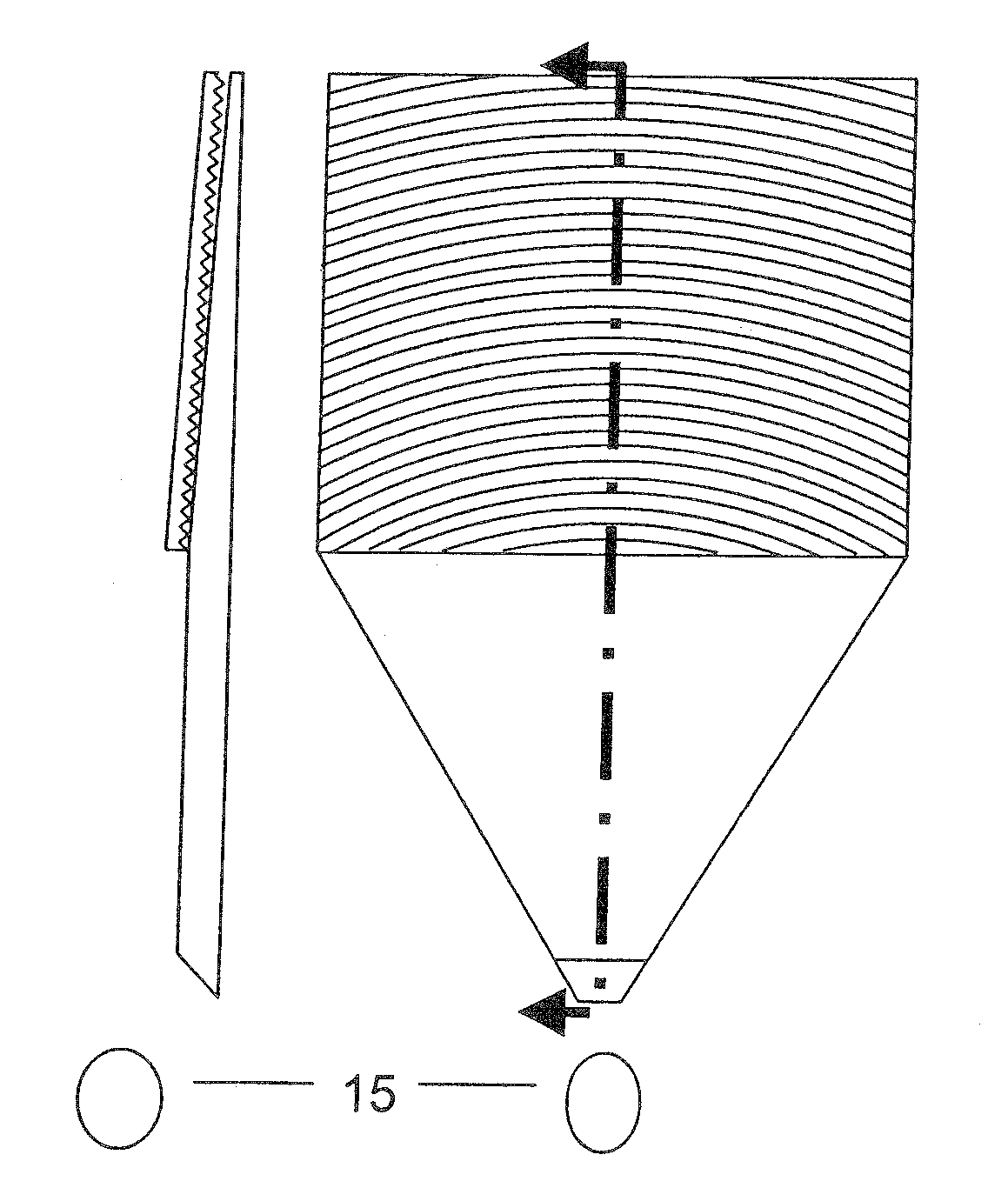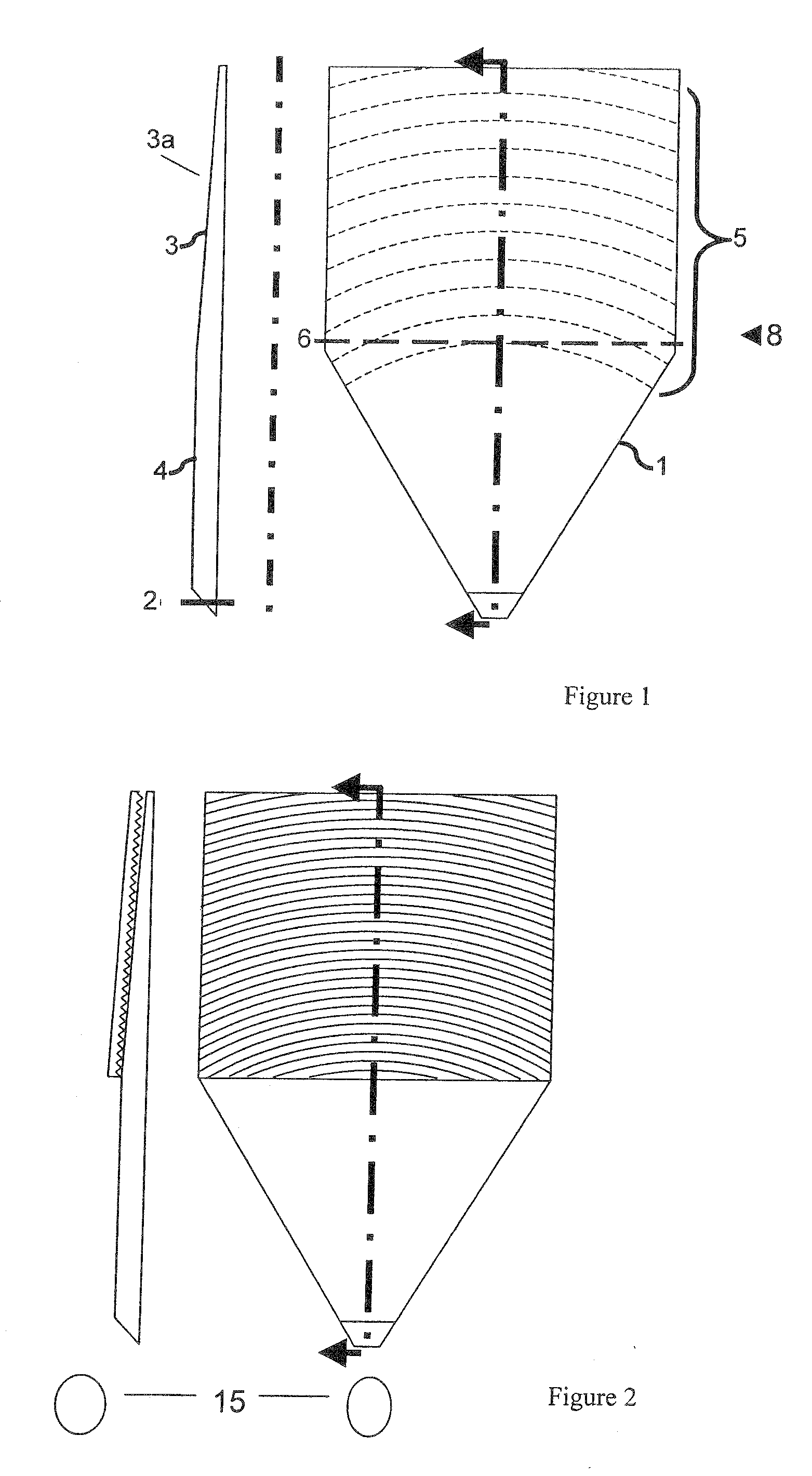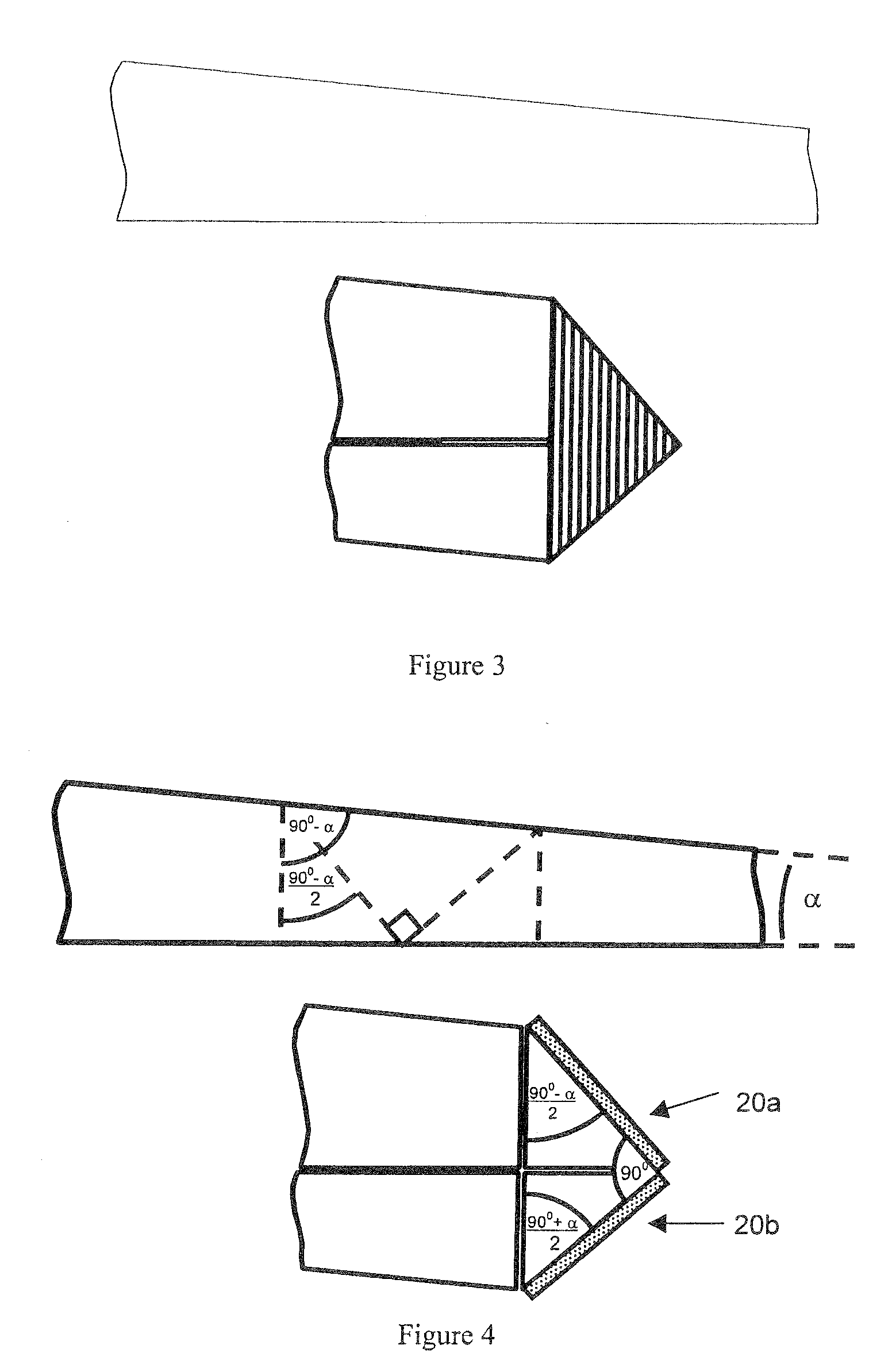Flat Panel Lens
a flat panel and lens technology, applied in waveguides, instruments, lighting and heating apparatuses, etc., can solve the problems of less well working with skew rays, picture banding, and bulky conventional optical systems, and achieve the effect of avoiding discontinuities and being more compa
- Summary
- Abstract
- Description
- Claims
- Application Information
AI Technical Summary
Benefits of technology
Problems solved by technology
Method used
Image
Examples
Embodiment Construction
[0014]FIG. 1 shows a flat lens generally indicated at 1, consisting of a circular-sector-shaped input region 4 and a tapered output region 3. For use in reverse, e.g. in a camera, the roles of these two parts are reversed but for convenience “input” and “output” will be used as labels. Light is input (or output, depending on direction) at a point generally indicated at 2, which is a small beveled face on the tip of the input region 4. This region is a parallel-face slab which in plan has the shape of an isosceles triangle or circular sector. The output region 3 with its output face 3a adjoins this input region, having initially the same thickness, but tapers down, as shown in the sectional view, according to the radial distance r from the input point 2. This taper can be uniform, as described in WO 01 / 72037, or, preferably, of a profile such as to keep the total number of bounces constant, as described in WO 03 / 13151. Input and output regions 4 and 3 can be made of one piece of the ...
PUM
 Login to View More
Login to View More Abstract
Description
Claims
Application Information
 Login to View More
Login to View More - R&D
- Intellectual Property
- Life Sciences
- Materials
- Tech Scout
- Unparalleled Data Quality
- Higher Quality Content
- 60% Fewer Hallucinations
Browse by: Latest US Patents, China's latest patents, Technical Efficacy Thesaurus, Application Domain, Technology Topic, Popular Technical Reports.
© 2025 PatSnap. All rights reserved.Legal|Privacy policy|Modern Slavery Act Transparency Statement|Sitemap|About US| Contact US: help@patsnap.com



